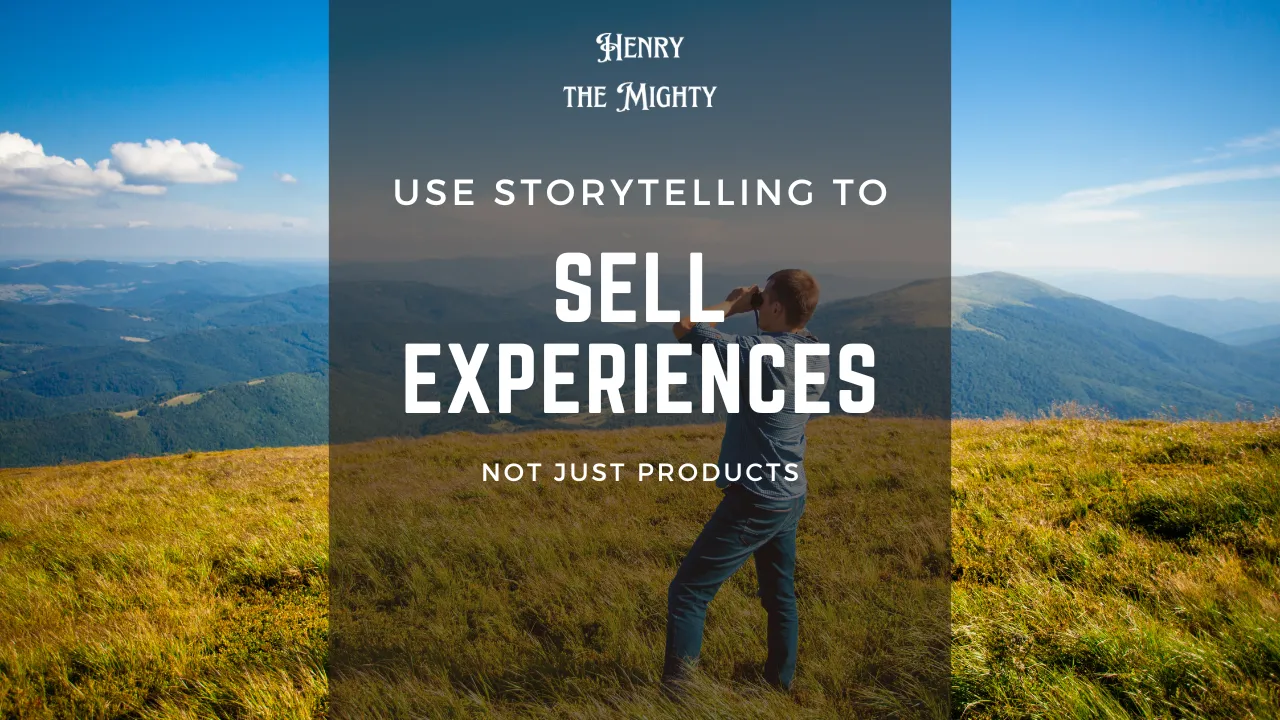Italian version below ... 
In today's market, it's no longer just about the product.
It's about the experience. You see this in all successful ads and services: they go beyond what you are paying for.
Here's how to use Storytelling to make your product/service an experience for your customers.
1: Know Your Audience.
Understand their desires, pain points, and aspirations.
Tailor your experiences to those needs.
They want to immerse in your stories and feel like they are the main character.
2: Craft Stories that Matter.
Craft a compelling narrative around your product.
People connect with stories, not just features and benefits.
And, in this competitive digital market, it's getting more and more important.
3: Immersive Experiences.
Use sensory elements like sound, smell, and touch to create a physical experience.
It's not always possible, of course. But there are simple solutions.
For example, info-businesses can send a box with small items related to the courses they sell.
4: Personalization.
Make customers feel unique.
Offer personalized recommendations, tailored offers, and exclusive experiences.
You don't need AI for that: simple segmentation tools are more than enough in most cases.
5: Community Building.
Foster a sense of belonging.
Create communities where customers can connect and share experiences.
This will also leverage the word-of-mouth to increase your customer base.
6: Customer Feedback.
Listen to your customers.
Use their feedback to improve your experiences.
This should be part of your routine as a business owner.
7: Gamification.
Create achievements, challenges, leaderboards and virtual rewards.
Gamification is simpler to implement than ever before, and it makes your users stick longer to your company.
8: Have them tell their story.
Have your best customers tell their stories.
Collect testimonials and use them as much as possible.
This will give credibility to your business and make it solid for the long term.
9: Measure and Analyze.
Track KPIs and make A/B tests.
Storytelling (like marketing) can be extremely scientific.
Use modern analysis tools at your advantage.
🇮🇹 🇮🇹 🇮🇹 🇮🇹 🇮🇹 🇮🇹
Versione Italiana
🇮🇹 🇮🇹 🇮🇹 🇮🇹 🇮🇹 🇮🇹
Nel mercato di oggi, non si tratta più solo del prodotto.
Si tratta dell'esperienza. Lo si vede in tutte le pubblicità e i servizi di successo: vanno al di là di ciò per cui si paga.
Ecco come utilizzare lo Storytelling per rendere il tuo prodotto/servizio un'esperienza per i tuoi clienti.
1: Conosci il tuo pubblico.
Comprendi i loro desideri, i punti dolenti e le aspirazioni.
Personalizza le tue esperienze in base a queste esigenze.
I clienti vogliono immergersi nelle tue storie e sentirsi protagonisti.
2: Crea storie che contano.
Crea una narrazione avvincente intorno al tuo prodotto.
Le persone entrano in contatto con le storie, non solo con le caratteristiche e i vantaggi.
In un mercato digitale così competitivo, questo aspetto è sempre più importante.
3: Esperienze coinvolgenti.
Usa elementi sensoriali come suoni, odori e tatto per creare un'esperienza fisica.
Non è sempre possibile, ovviamente. Ma esistono soluzioni semplici.
Ad esempio, le aziende informatiche possono inviare una scatola con piccoli oggetti legati ai corsi che vendono.
4: Personalizzazione.
Fai sentire i clienti unici.
Offri consigli personalizzati, offerte su misura ed esperienze esclusive.
Non c'è bisogno dell'intelligenza artificiale per questo: semplici strumenti di segmentazione sono più che sufficienti nella maggior parte dei casi.
5: Creare una comunità.
Promuovi un senso di appartenenza.
Crea delle comunità in cui i clienti possano connettersi e condividere le loro esperienze.
In questo modo sfrutterai anche il passaparola per aumentare la tua base di clienti.
6: Feedback dei clienti.
Ascolta i tuoi clienti.
Usa il loro feedback per migliorare le tue esperienze.
Questo dovrebbe far parte della tua routine di imprenditore.
7: Gamification.
Crea risultati, sfide, classifiche e ricompense virtuali.
La gamification è più semplice da implementare che mai e fa sì che i tuoi utenti rimangano più a lungo legati alla tua azienda.
8: Fagli raccontare la loro storia.
Chiedi ai tuoi migliori clienti di raccontare la loro storia.
Raccogli testimonianze e usale il più possibile.
Questo darà credibilità alla tua azienda e la renderà solida a lungo termine.
9: Misura e analizza.
Traccia i KPI e fai dei test A/B.
Lo storytelling (come il marketing) può essere estremamente scientifico.
Usa i moderni strumenti di analisi a tuo vantaggio.